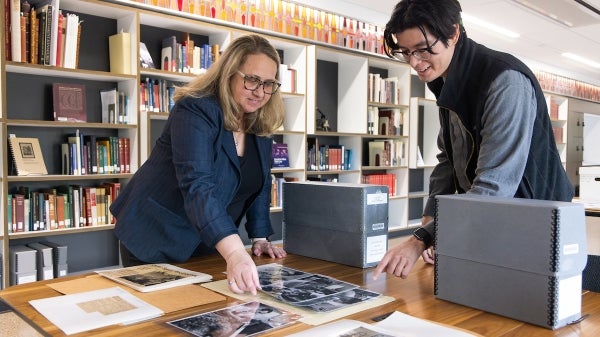Geologist major recognized as fall 2022 Dean's Medalist

School of Earth and Space Exploration Dean's Medalist Enzo Carrascal Marquez.
Editor’s note: This story is part of a series of profiles of notable fall 2022 graduates.
During his childhood, Enzo Carrascal Marquez and his family traveled the various landscapes of his home country, Peru, visiting and exploring the desert, the mountain region and the jungle. This exposure to nature, along with his interest in science since primary school, prompted him to major in geology.
“During the middle of high school, I realized I wanted a career that would allow me to spend time in a laboratory doing research but at the same time travel and explore new places,” Carrascal said. “Geology is a major with that perfect balance.”
Carrascal was named the 2022 Fall Dean’s Medalist from the School of Earth and Space Exploration and graduated with a Bachelor of Science in geological sciences.
Carrascal came to ASU as a transfer student from the National University of Engineering in Peru to experience an international university and broaden his opportunities after graduation. He discovered a vast number of possibilities and paths for his major with the opportunity to explore several upper-division courses.
“In the School of Earth and Space Exploration, I expanded my knowledge of geosciences in a leading institution in research and enjoyed the wonders that this state has to offer,” Carrascal said.
He is also a recipient of the New American University Transfer Scholarship from ASU for multiple semesters, because of his academic performance as an incoming transfer student.
During his time at ASU, Carrascal worked as an undergraduate researcher in the lab with Dan Shim, professor in the School of Earth and Space Exploration.
“The original plan was for an undergraduate researcher to assist in our efforts to develop new sample synthesis methods for shock wave experiments,” Shim said. “Enzo ended up leading the effort and completed the project within 6 months which is much shorter than we anticipated.”
After graduation, Carrascal will apply to graduate school to continue his studies in geosciences and plans to begin work in Arizona within his major.
“I want to have experience in both academia and industry, to become a competent professional able to solve problems with a significant impact on society,” Carrascal said.
Here, he shares a few thoughts about his time at ASU.
Question: Which professor taught you the most important lesson while at ASU?
Answer: I have to say that the professors at ASU are amazing, and my experience with SESE faculty has been enriching when reaching out for both academic and professional advising. I met Professor Duane DeVecchio in Dynamic Earth, a class in which I later became a teaching assistant working with him. By meeting him during office hours and classes I learned a lot of things, including the lesson of never limiting yourself when facing new challenges. By aiming for the highest, we move towards experiences that call for our best version, taking us to personal growth. I also thank professors Thomas Sharp, Dan Shim and Melanie Barboni who were important to me during this academic journey.
Q: What’s the best piece of advice you’d give to those still in school?
A: Get the most out of every experience you have in school, from classes to extracurricular activities. Trust in your capacity to find a balance between academic work and time for personal development/growth. Reach out to professors during office hours. Find a circle of mentors, friends and classmates that share your vision and passion for the things you do and the goals you envision.
Q: What was your favorite spot on campus, whether for studying, meeting friends, or just thinking about life?
A: I would spend time outside the Memorial Union working on assignments and casually meeting friends during the day. It is a versatile spot and gives you part of the college life experience. I also liked going to Noble Library to study and the grass fields to play soccer.
Q: If someone gave you $40 million to solve one problem on our planet, what would you tackle?
A: One of the topics I explored in upper-division classes was the power of remote sensing data, as in the case of satellite imagery, and the wide range of applications for society. Addressing the betterment of image resolution on current satellites and exploring the promising capabilities of hyperspectral imaging for Earth observation would have a significant impact on our capacity of monitoring changes in the surface of the Earth, such as reducing the spread of wildfires, early identification of threatening conditions for crops in agriculture, enhanced exploration of mineral resources and so much more.
More Sun Devil community

University Archives chronicles more than 140 years of Sun Devil history
What was the name of the butcher who bequeathed the first piece of land that ultimately became the nation’s largest public…

3 outstanding ASU alumni named The College Leaders of 2024
Three outstanding Arizona State University alumni from The College of Liberal Arts and Sciences will be named as this year’s…

From mushy ice to Mullett Arena
Greg Powers rubbed the top of his head and smiled.Powers, Arizona State University’s hockey coach, had been asked to reflect on…